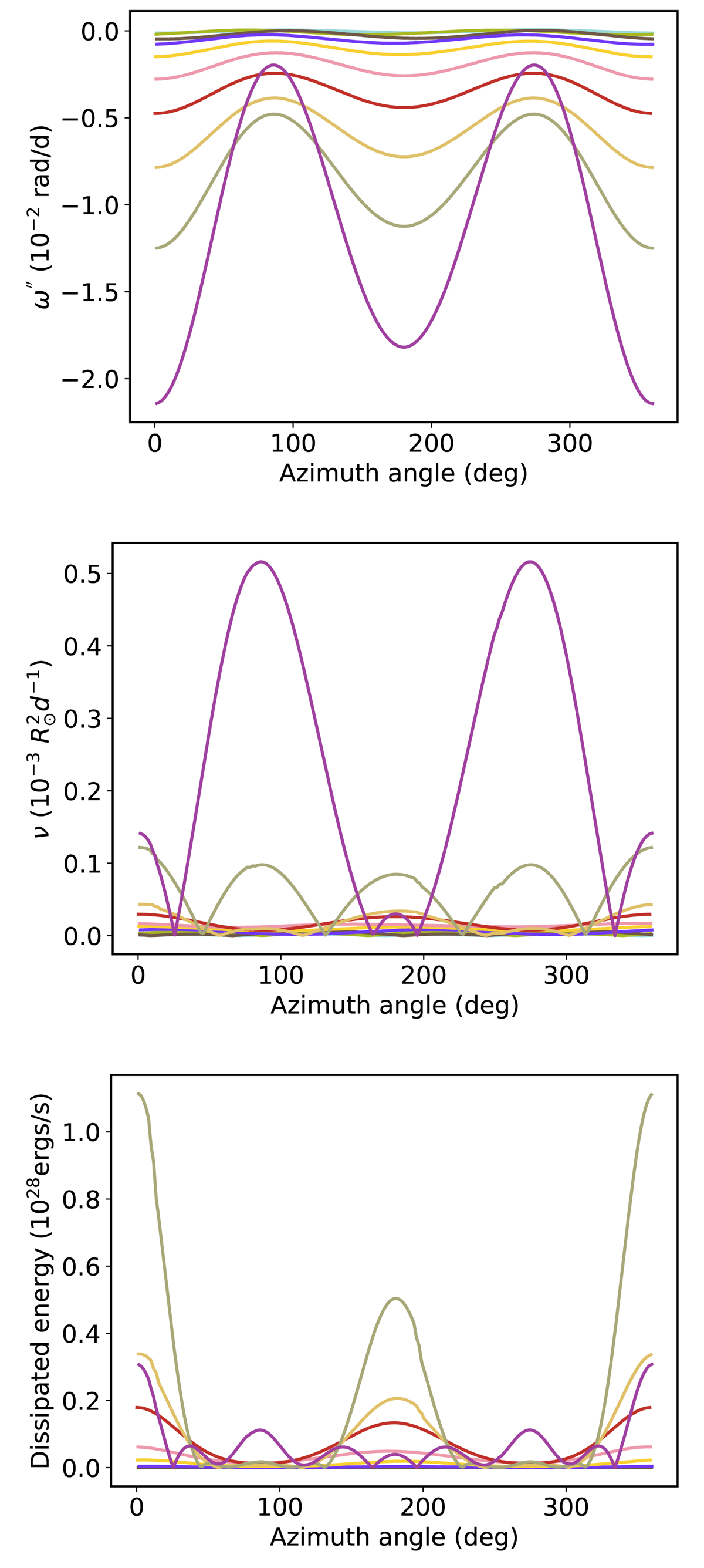Fig. 1.

Download original image
Angular velocity, viscosity and dissipated energy as a function of azimuth angle in the ten layers of model 63. The azimuth angle is measured in the direction of the companion’s orbital motion and φ = 0 corresponds to the sub-binary longitude. Top: angular velocity ω″ at the equator in the perturbed star rest frame. The surface layers (largest amplitude curves) are more strongly coupled to the tidal field than the inner layers and thus are forced to lag behind the supersynchronously rotating core. Middle: turbulent viscosity values computed by the model. Bottom: tidal shear energy dissipation rate.
Current usage metrics show cumulative count of Article Views (full-text article views including HTML views, PDF and ePub downloads, according to the available data) and Abstracts Views on Vision4Press platform.
Data correspond to usage on the plateform after 2015. The current usage metrics is available 48-96 hours after online publication and is updated daily on week days.
Initial download of the metrics may take a while.


